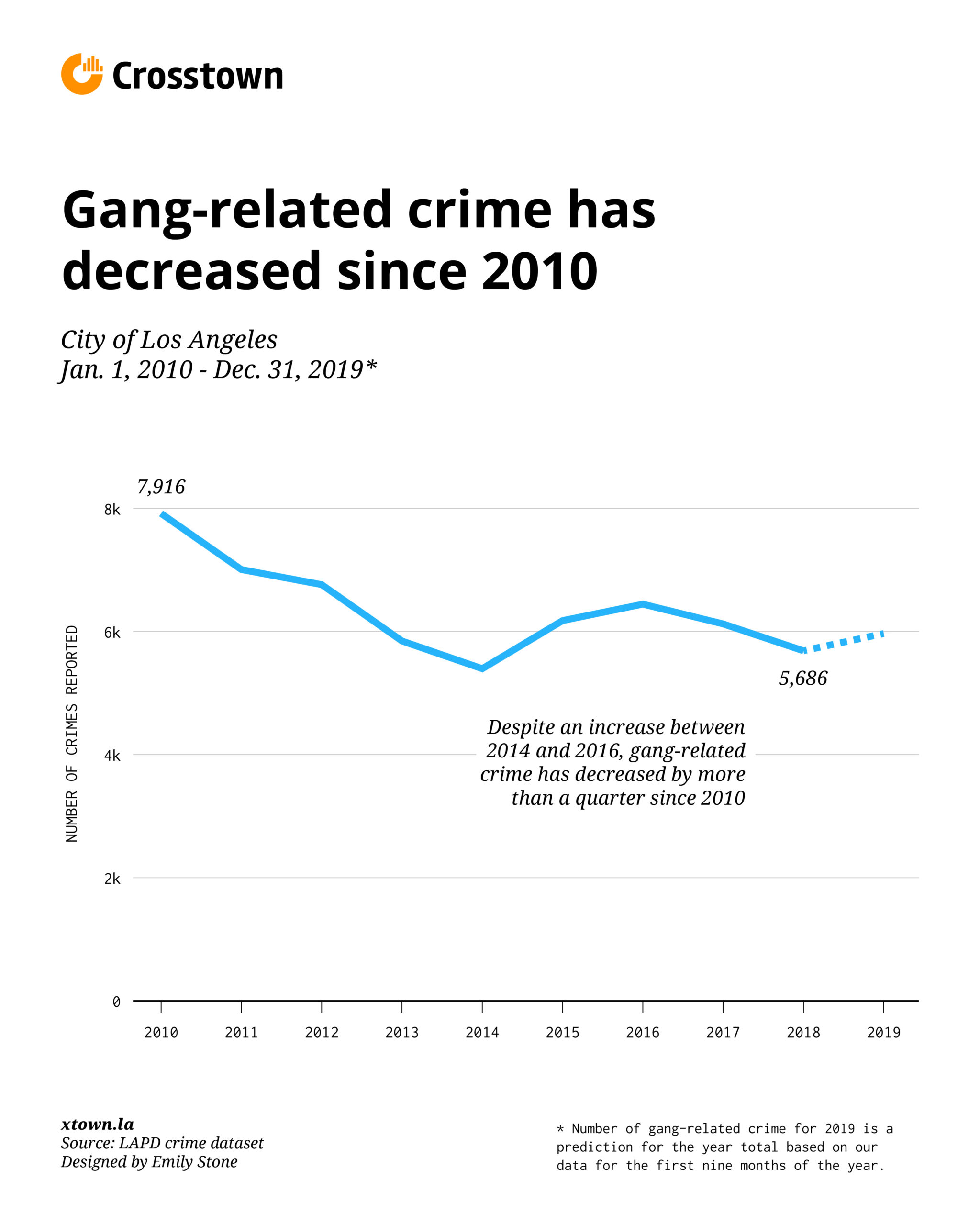Gang crimes see minor increase in the first nine months of 2019

The days of rampant gang violence in Los Angeles are long gone, but this year has seen a slight uptick in reports of gang-related crimes.
Gang-related crimes in the City of Los Angeles have increased by 4% in the first nine months of this year, with 4,473 total gang-related crimes reported to the Los Angeles Police Department. This makes for an average of 16.4 gang-related crimes per day from Jan. 1 – Sept. 30, 2019.
Violent crimes accounted for 62.4% of all gang-related crimes in the first nine months, in line with last year’s percentage.

One gang-related incident occurred on the 800 block of Bayview Ave. in the Wilmington neighborhood of Los Angeles at 3:15 p.m. on Sept. 18. fatally shot two and injured two others, according to LAPD data.
A 16-year-old Hispanic woman and a 24-year-old Hispanic man were killed. The injured victims were a 22-year-old Hispanic woman and a 73-year-old Hispanic woman. The crime was reported both as a homicide and assault with deadly weapon. The police data doesn’t provide any details on possible motivation for the attack.
While fluctuations may exist, gang-related crimes have been on the decline in LA since the 1990s. Since 2010, the first complete year of LAPD data, gang-related crimes have decreased by more than a quarter.
Alex Alonso, a gang researcher and a professor at California State University, Long Beach, says this decline is part of a larger nationwide reduction in gang violence that also began in the 1990s.
LA has implemented programs like the GRYD Foundation to reduce youth involvement in gang violence to combat gang violence, says Officer Hector Diaz of the LAPD’s Gang and Narcotics Division.
How we did it: We examined LAPD publicly available data on reported gang-related crimes for the first nine months of 2019 as well as all reported gang-related crimes since Jan. 1, 2010, when the LAPD started making its crime data publicly available. For neighborhood boundaries, we rely on the borders defined by the Los Angeles Times. Learn more about our data here.
LAPD data only reflects crimes that are reported to the department, not how many crimes actually occurred. In making our calculations, we rely on the data the LAPD makes publicly available. On occasion, LAPD may update past crime reports with new information, or recategorize past reports. Those revised reports do not always automatically become part of the public database.
Want to know how your neighborhood fares? Or simply just interested in our data? Email us at askus@xtown.la.






